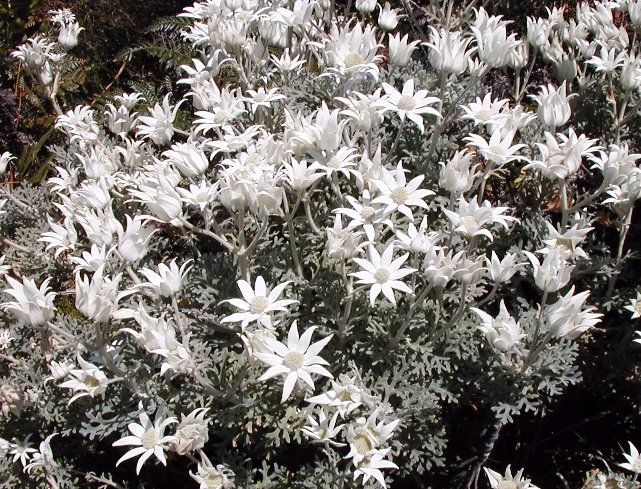Flannel Flower
(Actinotus helianthi)
Flannel Flower (Actinotus helianthi)
/
/

Photo: Cas Liber (user:Casliber)
Public domain
Image By:
Photo: Cas Liber (user:Casliber)
Recorded By:
Copyright:
Public domain
Copyright Notice:
Photo by: Photo: Cas Liber (user:Casliber) | License Type: Public domain | License URL: https://creativecommons.org/public-domain/ | Uploader: Casliber | Publisher: Wikimedia Commons | Title: Flannel_Flower_Henry_Head2_email.jpg | Notes: Transferred from Flickr by [[User:russavia]] |












































































Estimated Native Range
Summary
Actinotus helianthi, commonly known as Flannel Flower, is an evergreen subshrub native to the sandy soils of coastal heath and open forest environments in Eastern Australia. It typically grows up to 50 cm (18 in) high and is characterized by its soft, woolly texture, which gives it the common name. The stem, branches, and leaves are a pale grey, covered in downy hair reminiscent of flannel. The leaves are attractively lobed, up to 10 cm (4 in) long and 7 cm (3 in) wide. The Flannel Flower boasts daisy-shaped flowerheads around 5 or occasionally 8 cm (2–3 in) in diameter, with bracts that are cream to white in color. Its flowering season is in spring, often with increased blooming following bushfires, which stimulate seed germination.
The Flannel Flower is celebrated for its unique texture and striking flowers, making it a popular choice for rockeries, cottage gardens, and as a cut flower in floral arrangements. It is relatively easy to maintain, requiring minimal water once established, and thrives in well-drained soils with good exposure to sunlight. While it prefers full sun, it can tolerate part shade. It is important to avoid overwatering, as this can lead to root rot. The Flannel Flower can be propagated by seed or cutting, though it can be challenging to grow from seed without pre-treatment to break seed dormancy.CC BY-SA 4.0
The Flannel Flower is celebrated for its unique texture and striking flowers, making it a popular choice for rockeries, cottage gardens, and as a cut flower in floral arrangements. It is relatively easy to maintain, requiring minimal water once established, and thrives in well-drained soils with good exposure to sunlight. While it prefers full sun, it can tolerate part shade. It is important to avoid overwatering, as this can lead to root rot. The Flannel Flower can be propagated by seed or cutting, though it can be challenging to grow from seed without pre-treatment to break seed dormancy.CC BY-SA 4.0
Plant Description
- Plant Type: Herb
- Height: 2.5-3 feet
- Width: 2-3 feet
- Growth Rate: Moderate
- Flower Color: White
- Flowering Season: Spring, Summer
- Leaf Retention: Evergreen
Growth Requirements
- Sun: Full Sun, Part Shade
- Water: Low, Medium
- Drainage: Medium
Common Uses
Border Plant, Low Maintenance, Potted Plant, Rock Garden, Showy Flowers
Natural Habitat
Sandy soils of coastal heath and open forest environments in Eastern Australia
Other Names
Common Names: Flanellflocka
Scientific Names: , Actinotus helianthi, Eriocalia major,
GBIF Accepted Name: Actinotus helianthi Labill.